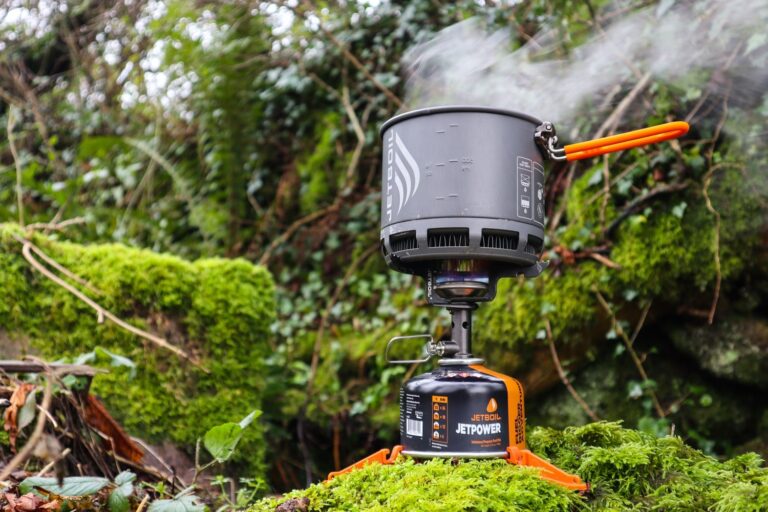Selecting the right hiking stove is crucial for any outdoor enthusiast. Whether you’re a seasoned backpacker or a weekend warrior, a reliable stove can make a significant difference in your hiking experience. In Australia’s diverse landscapes, understanding the essential considerations will guide you towards the perfect portable cooking solution as part of your hiking gear arsenal that suits your needs.
Here’s some tips to consider when looking at buying hiking stoves
Can you cook food with a hiking stove?
Yes, you can cook food with a hiking stove. Hiking stoves are designed for outdoor cooking and are versatile enough to handle various types of meals. They are commonly used for boiling water, simmering, and even frying. The type of meals you can prepare depends on the stove’s features and your cooking skills. Many hikers use stoves to make simple yet satisfying meals such as pasta, soups, dehydrated meals, and hot beverages while out in the wilderness.
Do I need a stove when I go hiking?
Whether you need a stove when hiking depends on your preferences, the duration of your hike, and the type of food you plan to consume. While some hikers prefer the convenience of ready-to-eat meals or snacks, others enjoy the experience of cooking hot meals on the trail. A stove becomes essential for longer trips where access to pre-cooked or perishable food is limited. It also provides a means to purify water by boiling, ensuring safe hydration during your journey.
How long does a gas canister last with a hiking stove?
The duration a hiking stove gas canister lasts varies based on factors like the stove’s fuel consumption rate, the type of gas used, and how often and for what purposes the stove is used. As a general guideline, a standard 230-gram isobutane canister can last anywhere from 1 to 2 hours of continuous use on high heat settings. However, this estimate can change based on factors such as altitude, temperature, and the specific stove model. It’s advisable to carry extra fuel canisters for longer hikes or trips with uncertain fuel availability.
How do I choose a hiking stove?
Choosing a hiking stove involves considering several factors:
- Fuel Type: Decide on the type of fuel that suits your preferences and the conditions you’ll encounter. One of the first decisions to make is the type of fuel your hiking stove will use. Options range from traditional canister stoves using propane or butane to liquid fuel stoves like white gas or kerosene. Consider the availability of fuel, ease of use, and the stove’s efficiency in different weather conditions. Each fuel type has its pros and cons, so choose the one that aligns with your preferences and the environments you’ll be exploring.
- Portability: Choose a stove that fits your backpacking style, balancing weight with performance. For hikers, weight is a critical factor. Look for a stove that balances performance with portability. Ultralight canister stoves are popular for their compact design, making them ideal for solo hikers. Multi-fuel stoves may be slightly heavier but offer versatility for various trips. Evaluate your backpacking style and choose a stove that fits seamlessly into your gear without compromising on functionality.
- Durability: Opt for stoves made from robust materials that can withstand outdoor conditions. Australian terrains can be rugged, so durability is paramount. Opt for hiking stoves constructed from robust materials such as stainless steel or aluminum. Sturdy pot supports, wind resistance, and a stable base contribute to a stove’s overall durability. A reliable stove should withstand the challenges of outdoor cooking, ensuring longevity for your investment. For hikers, weight is a critical factor. Look for a stove that balances performance with portability. Ultralight canister stoves are popular for their compact design, making them ideal for solo hikers. Multi-fuel stoves may be slightly heavier but offer versatility for various trips. Evaluate your backpacking style and choose a stove that fits seamlessly into your gear without compromising on functionality.
- Boil Time and Cooking Performance: Evaluate the stove’s efficiency in boiling water quickly and its ability to handle different cooking tasks. Examine the stove’s boil time and cooking capabilities, as these directly impact your overall camping experience. Fast-boiling stoves are convenient, especially during adverse weather conditions. Additionally, consider the stove’s simmer control if you plan on preparing a variety of meals. A versatile stove that excels in both boiling speed and cooking precision enhances your culinary options in the wilderness.
- Ease of Maintenance: Select a stove with a simple design for easy cleaning and maintenance. Efficiency doesn’t end with cooking – the ease of maintenance matters too. Look for hiking stoves with simple designs that facilitate quick assembly, disassembly, and cleaning. Stoves with minimal parts reduce the risk of malfunctions and make field repairs more manageable, ensuring a hassle-free outdoor cooking experience.
So when embarking on your next hiking adventure in Australia, a well-chosen stove is your culinary companion. Consider fuel type, portability, durability, cooking performance, and ease of maintenance to make an informed decision. With the right hiking gear, you can savor hot meals in the great outdoors, enhancing the joy of your wilderness exploration.

